“Shapely” and sexy…the L-749 Connie was also a key evolutionary step in the advancement of air travel.
On 14 March 1947, the first Lockheed L-749 Constellation took to the skies. The first Connie to have the fuel capacity and the resultant range to fly non-stop across the Atlantic Ocean, the L-749 also had strengthened landing gear and was eventually equipped with a nose-mounted weather radar system. One of the most easily recognized airliners ever, the Connie was said to have a “shapely” design.
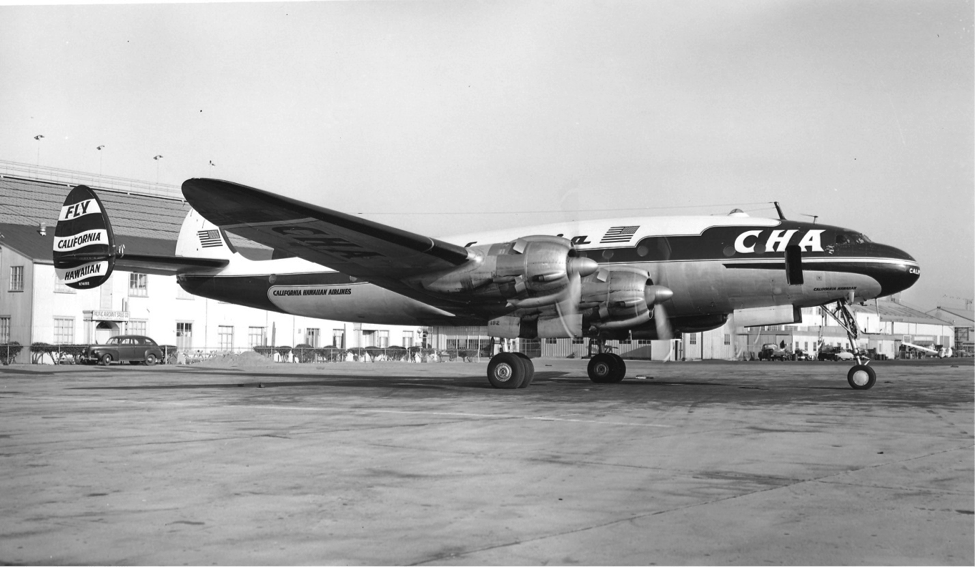
The L-749 received certification in March of 1947. Air France took delivery of the first operational L-749 Constellation on 18 April 1947. In June, L-749 service soon began on Pan American World Airways’ “Round the World” service. Trans World Airlines (TWA), KLM, Cubana de Aviación, Línea Aeropostal Venezolana, and Avianca all began use of the L-749 Connie in 1947.
The United States Air Force ordered a militarized version of the L-749 Constellation designated C-121. The United States Navy also ordered the L-749 and designated it PO-1W. Eventually, the Navy re-designated it the WV-1.
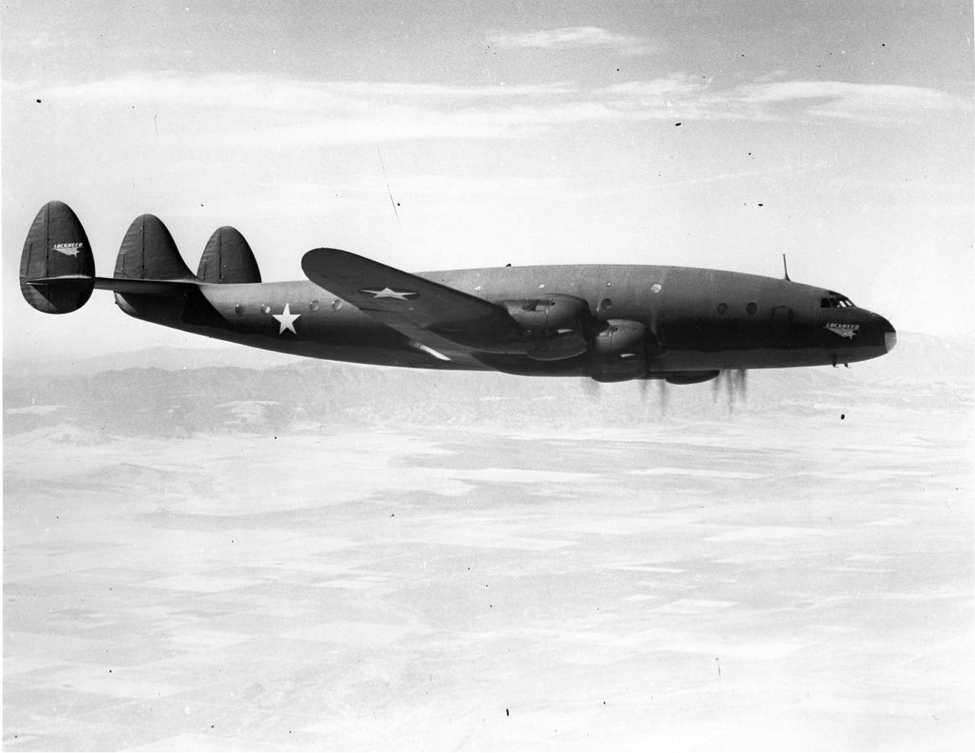
In 1949, Lockheed began producing the improved L-749A. The L-749A had a strengthened fuselage, additional strengthening of the distinctly long-legged landing gear, a composite floor, slightly different engine cowlings, and new Curtiss Electric propellers.
Lockheed also offered a kit for current L-749 operators to perform their own upgrades to the L-749A standard.
South African Airways was the first customer for the L-749A. TWA operated 26 L-749As, making them the largest single customer for the type. TWA operated their –As until 1967. Production of the L-749A ended in 1951, after 119 had been built, allowing Lockheed to focus on the L-749A’s replacement, the L-1049 Super Constellation.

First taking flight on 14 July 1951 (the prototype first flew on 13 October 1950), the L-1049 Super Connie incorporated 550 improvements and modifications to the L-749. These included increased fuel capacity, improved heating and pressurization, rectangular passenger windows, and larger cockpit windshields. Eastern Air Lines ordered 10 aircraft and used them on their Miami-to-New York route. TWA ordered 14 of them.
On 17 February 1953, the L-1049C took to the air for the first time. Propelled by Wright R-3350 Turbo-compound engines, which had just been made available for civilian use, the –C was capable of faster speeds and climb rates than the original L-1049.
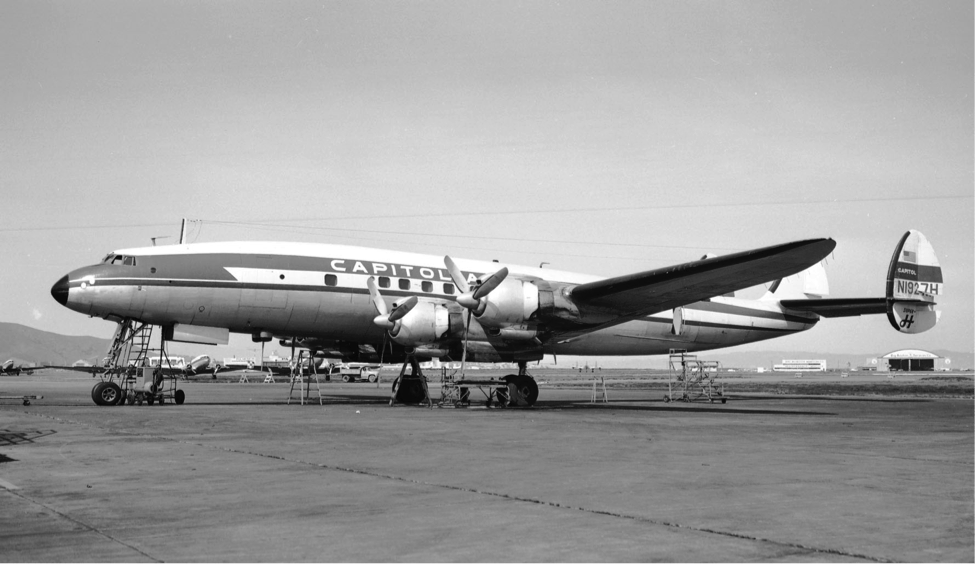
A distinctive feature of the L-1049C and its engines was the introduction of the new Power Recovery Turbine (PRT) system. Using each engine’s exhaust to turn turbines (similar to a turbocharger), the system was capable of adding 550 horsepower to each engine. The flame visible from the exhaust pipes of restored L-1049C engines is still a crowd-pleaser today.
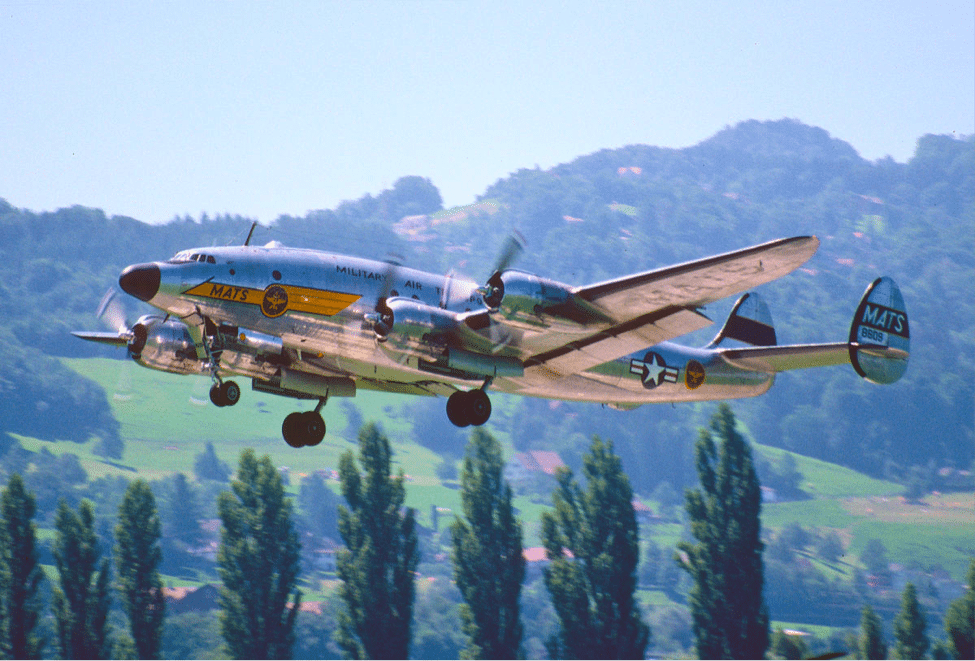
The 48 L-1049Cs built by Lockheed were operated by Air France, Air India, Avianca, Cubana de Aviación, Eastern Air Lines, Iberia, Línea Aeropostal Venezolana, Pakistan International Airlines, QANTAS, Trans-Canada Air Lines, and TWA. KLM introduced the L-1049C on their Amsterdam to New York route in 1953.
The next Connie variant was the L-1049E. Twenty-eight of these radar-equipped Constellations were delivered to a total of eight airlines. The first of more than 100 L-1049G or “Super G” Super Constellations took to the skies for the first time on 17 December 1954. The Super G incorporated more than 100 additional refinements to the L-1049C. Sixteen airlines operated the Super G, but TWA was the one that gave it the Super G moniker.

The commercial follow-on to the Super G, the L-1049H, was a convertible cargo/passenger aircraft and first flew on 20 November 1956. Entering service with QANTAS a month after its first flight, the –H was fitted with uprated engines. It featured the ability to stow nearly all of the “furniture” associated with passenger service in the hold when carrying freight.
When the Boeing 707 and Douglas DC-8 jetliners started regular service, it spelled the beginning of the end for the Connie and Super Connie. Dominican carriers were the last commercial operators of the L-1049; however, the FAA banned them from flying over the United States in 1993 due to safety concerns.
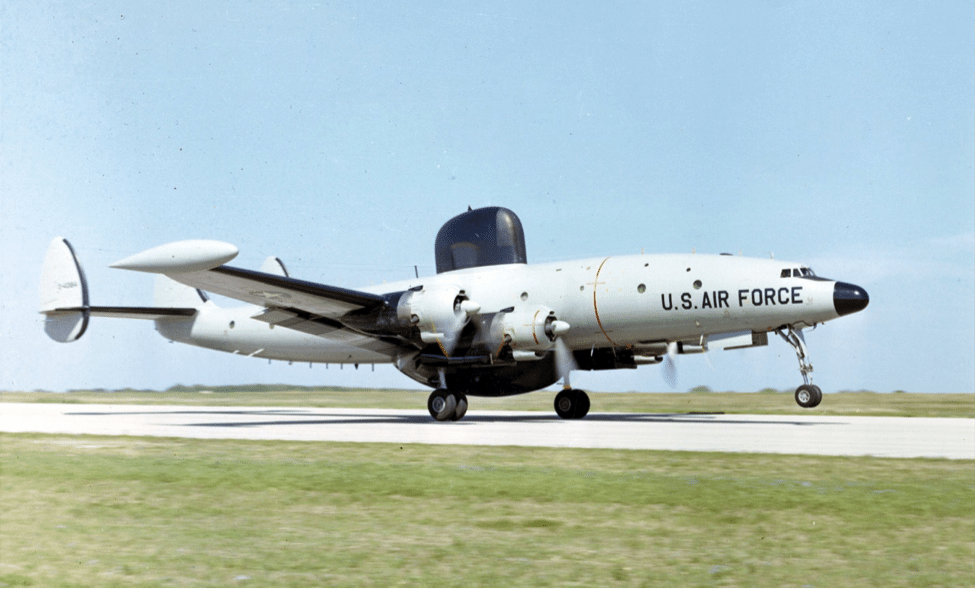
Both the United States Air Force and the United States Navy operated military versions of the Constellation as transports, but were more effectively used as weather reconnaissance, airborne early warning and control (AEW&C), airborne television transmission, airborne command and control, and radar surveillance aircraft.
In Air Force service, the Connie was designated EC-121 or RC-121. Navy Connies were WV-1s. Navy “Willie Victors” worked in conjunction with radar picket ships off each coast of the United States as part of the Distant Early Warning (DEW) line during the Cold War, flying 14-hour missions and tasked with warning the nation in the event of a Soviet attack. They also functioned as Hurricane Hunter aircraft.
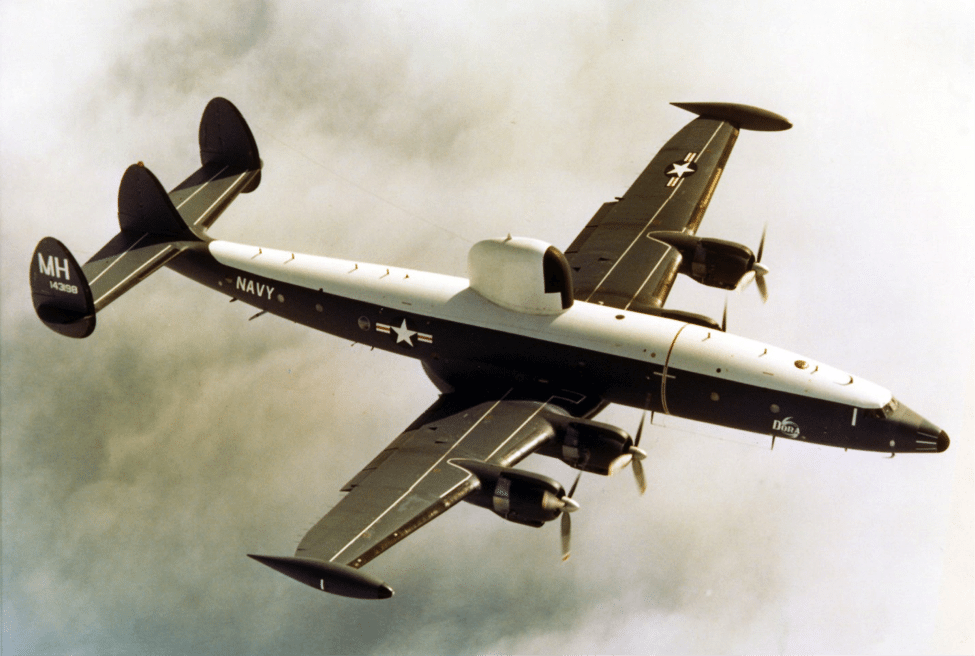
Air Force EC-121 and RC-121 aircraft flew Big Eye, College Eye, Rivet Top, Disco, and Bat Cat missions during the Vietnam War. Air Force EC-121s also contributed to Operation Kingpin, the 21 November 1971 attempted rescue of American prisoners from Son Tay prison in North Vietnam.
These specialized electronic warfare aircraft sported radomes bulging out of their shapely fuselages from the bottom, the top, or both. Blade antennae for the various electronics inside sprouted seemingly from everywhere.
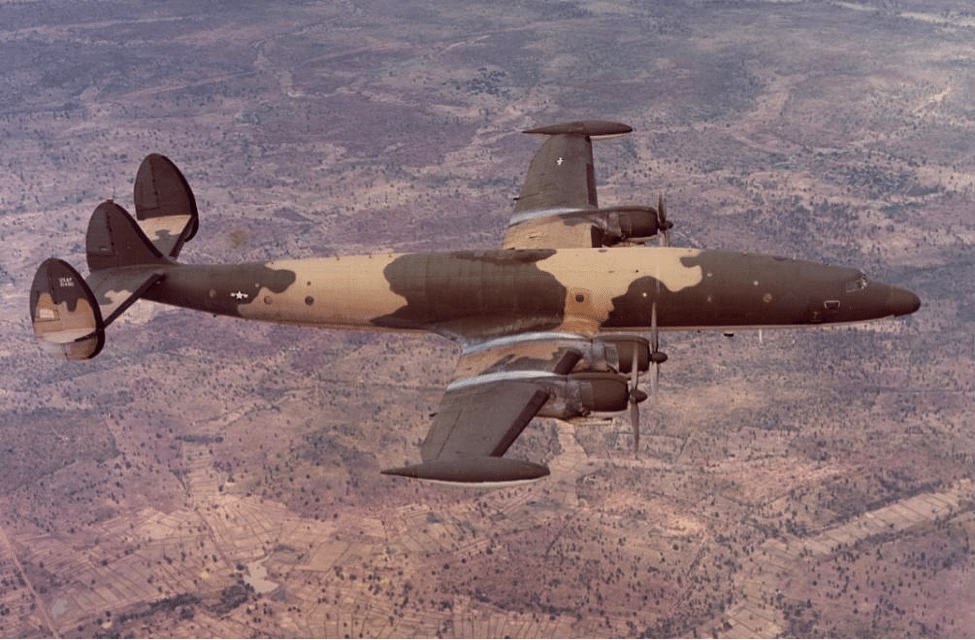
The last military L-1049, the only NC-121K, was used by the Navy’s Electronic Warfare Squadron, VAQ-33 Firebirds, stationed at Naval Air Station Key West in Florida. Used to simulate the electronic emissions of “attacking” Russian aircraft until 1982, it was replaced by a dedicated DC-8-54 aircraft designated EC-24A in naval service.
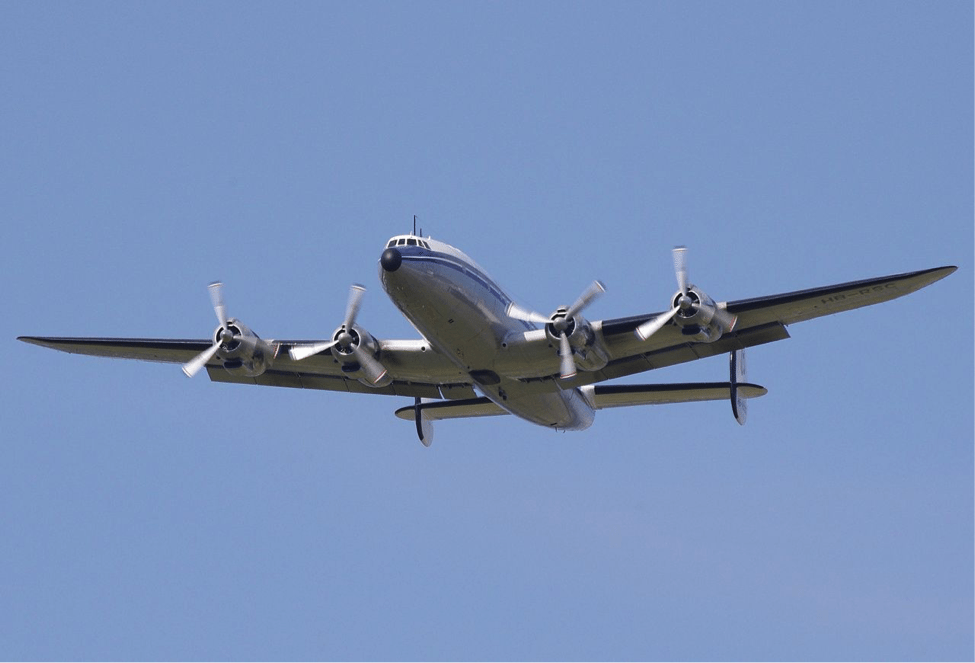
Only two Lockheed Constellations remain airworthy today: the HARS “Connie” (VH-EAG) in Australia, and Bataan (S/N 48-0613) in the US, which was once General MacArthur’s transport and now flies with Lewis Air Legends after a complete restoration and custom VIP interior.
